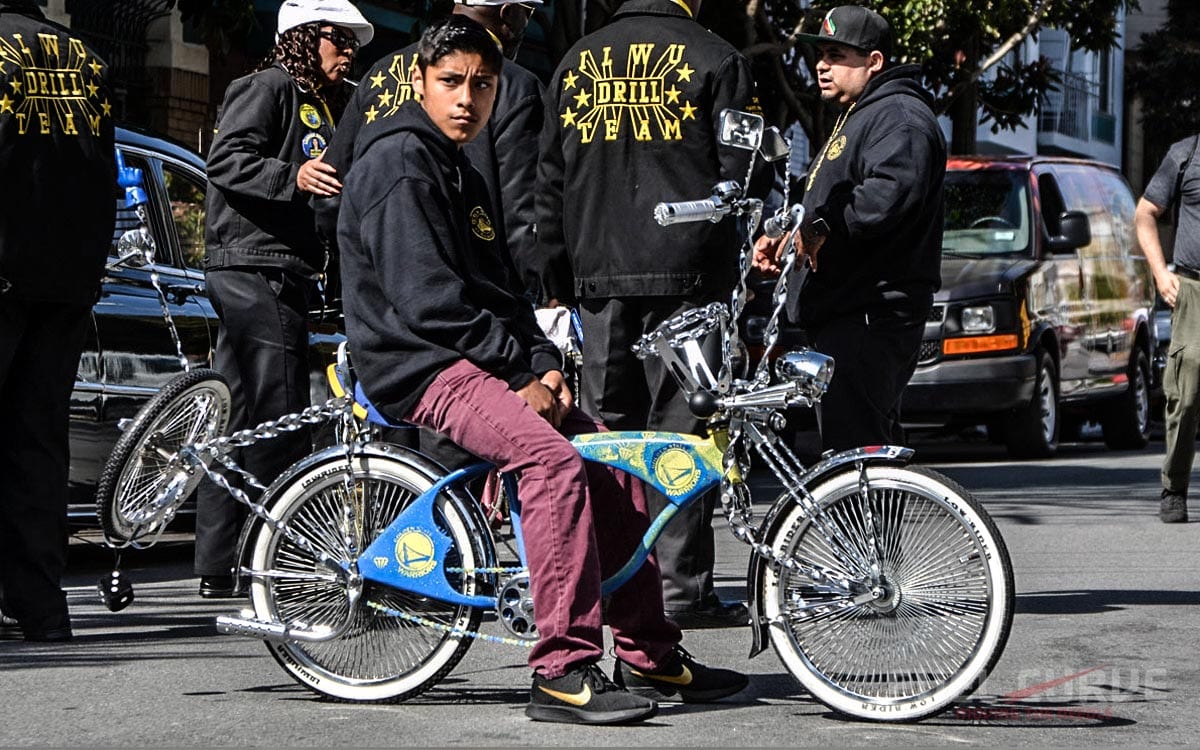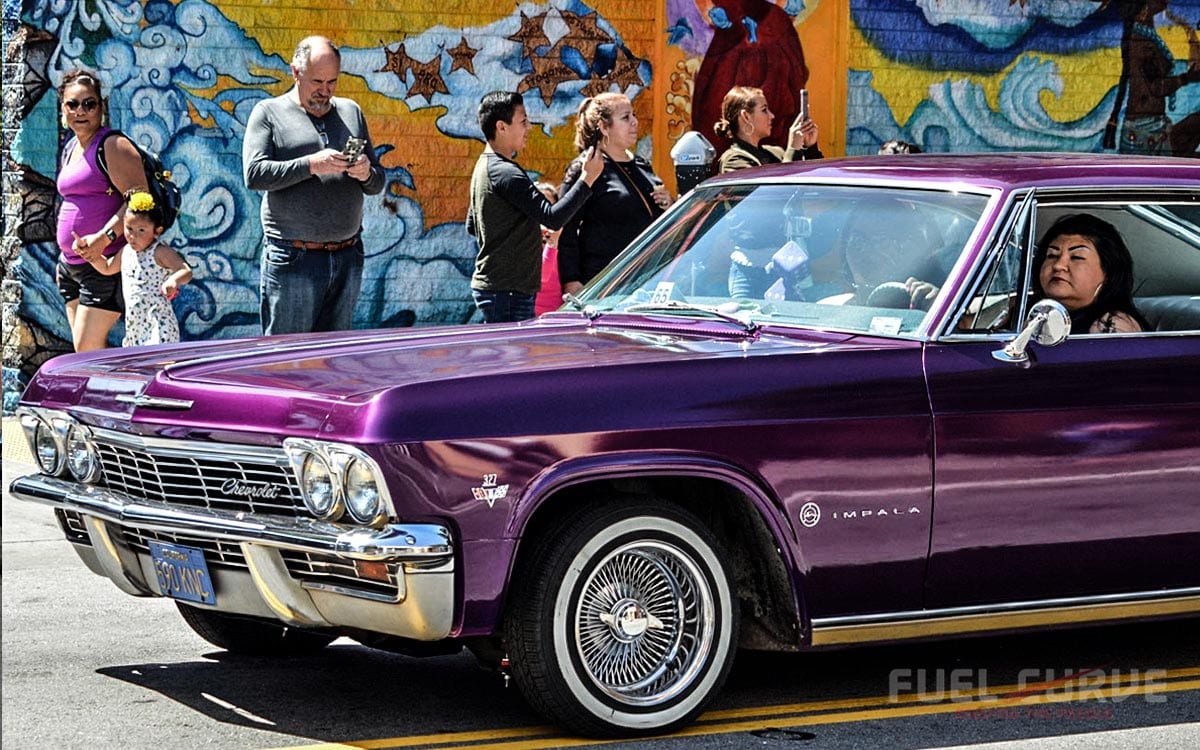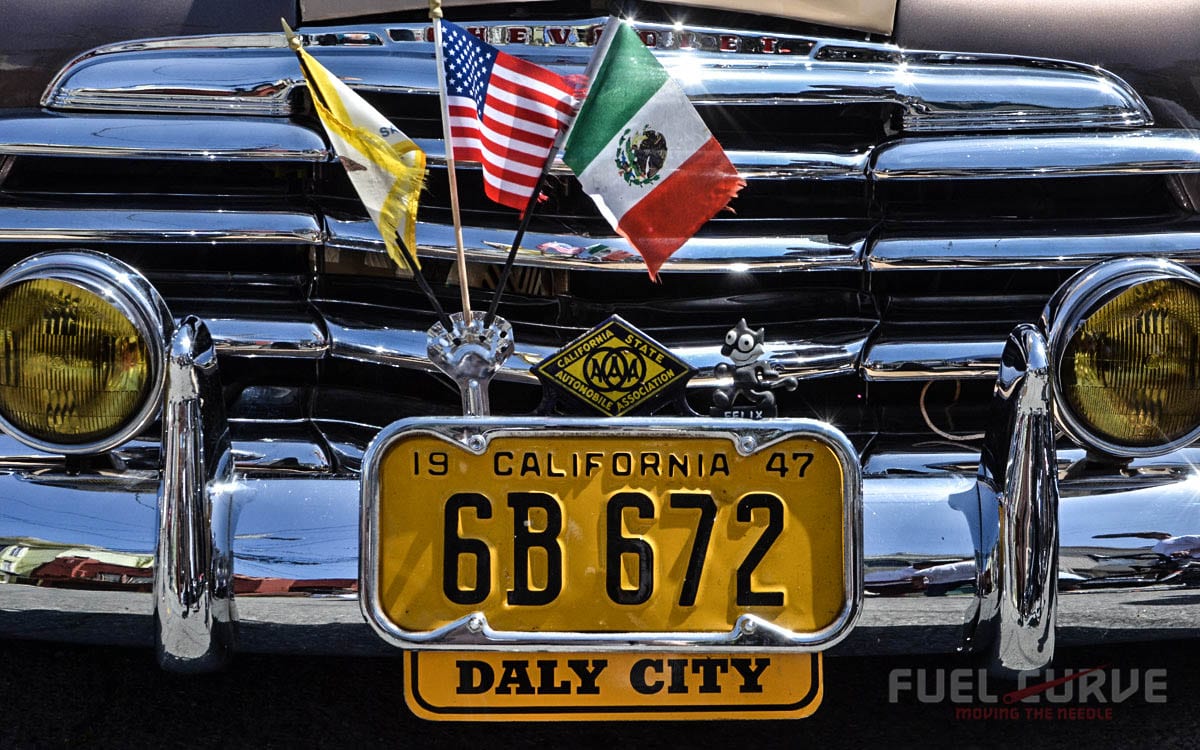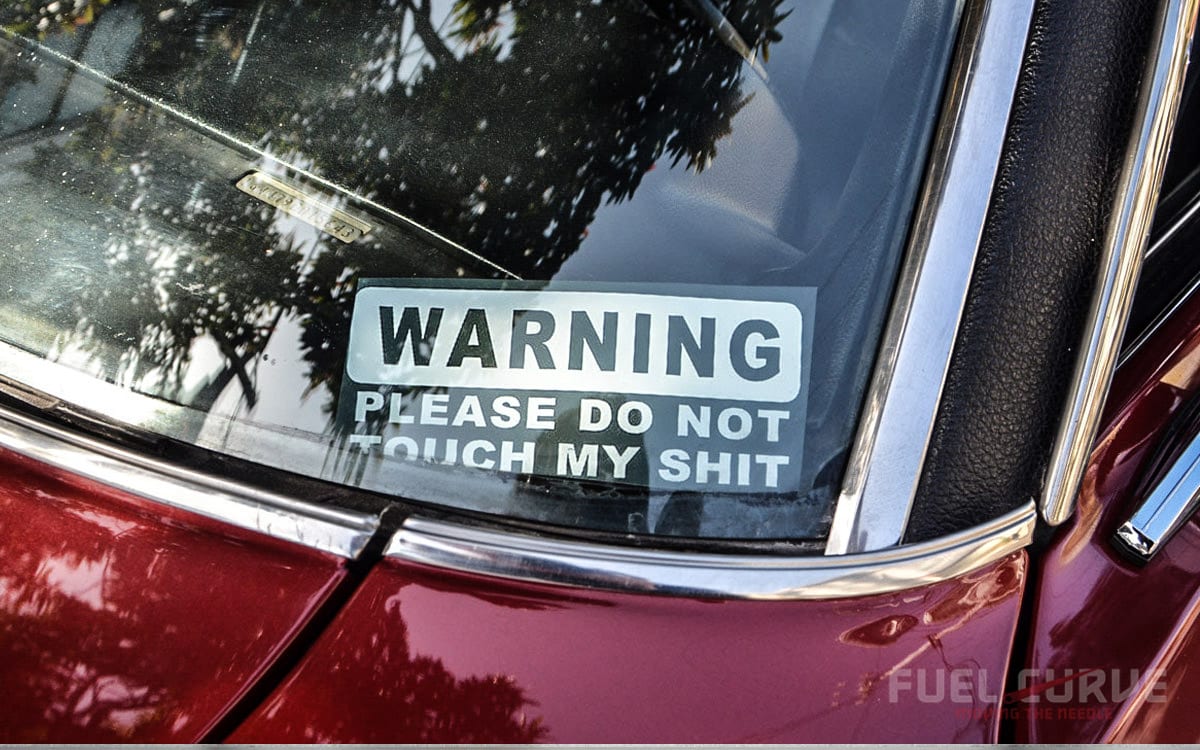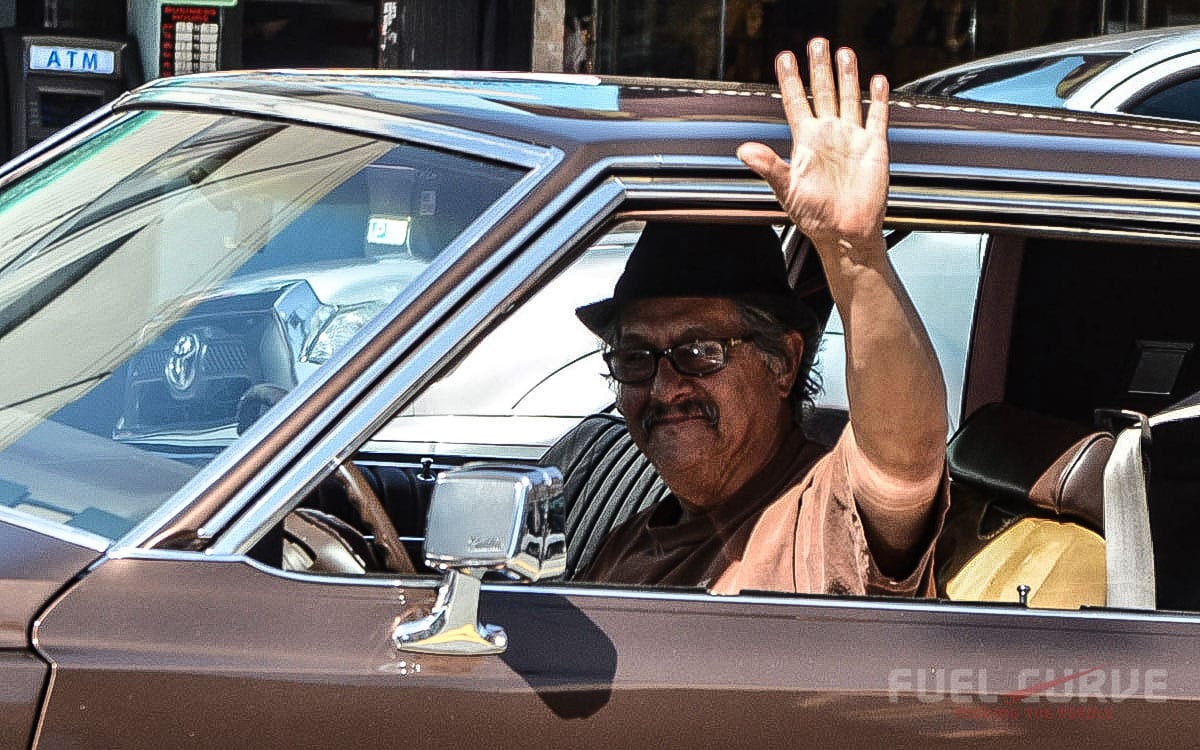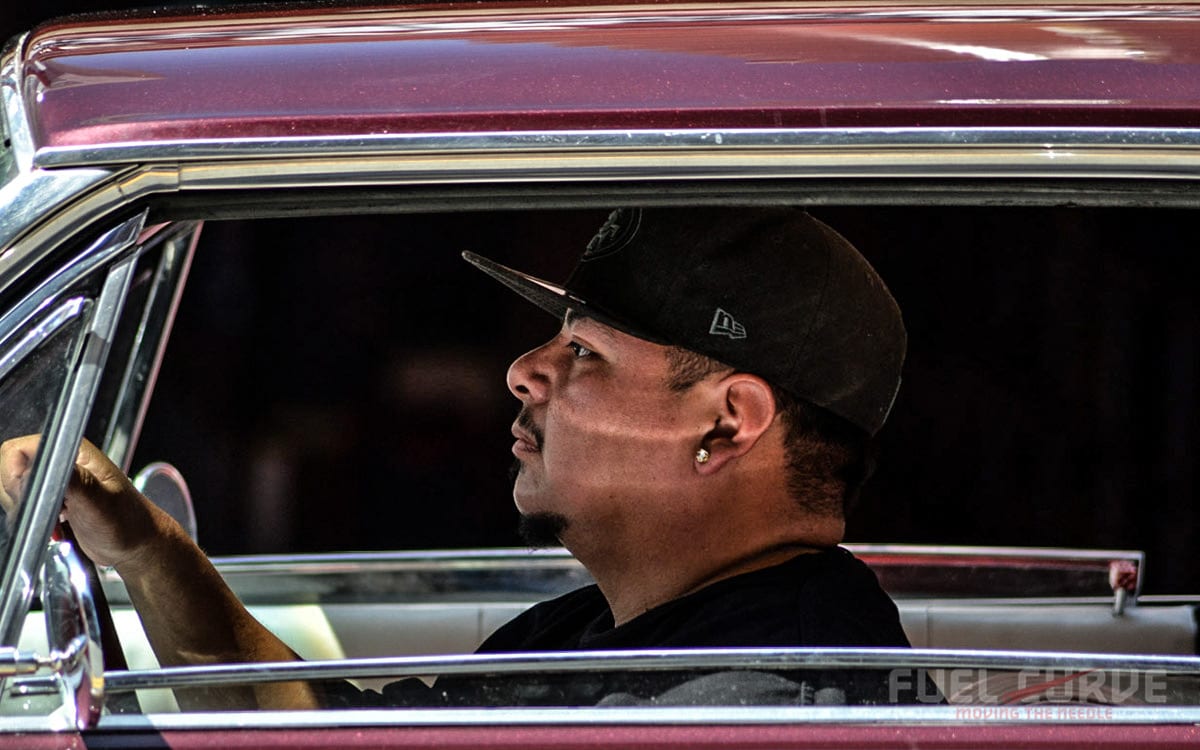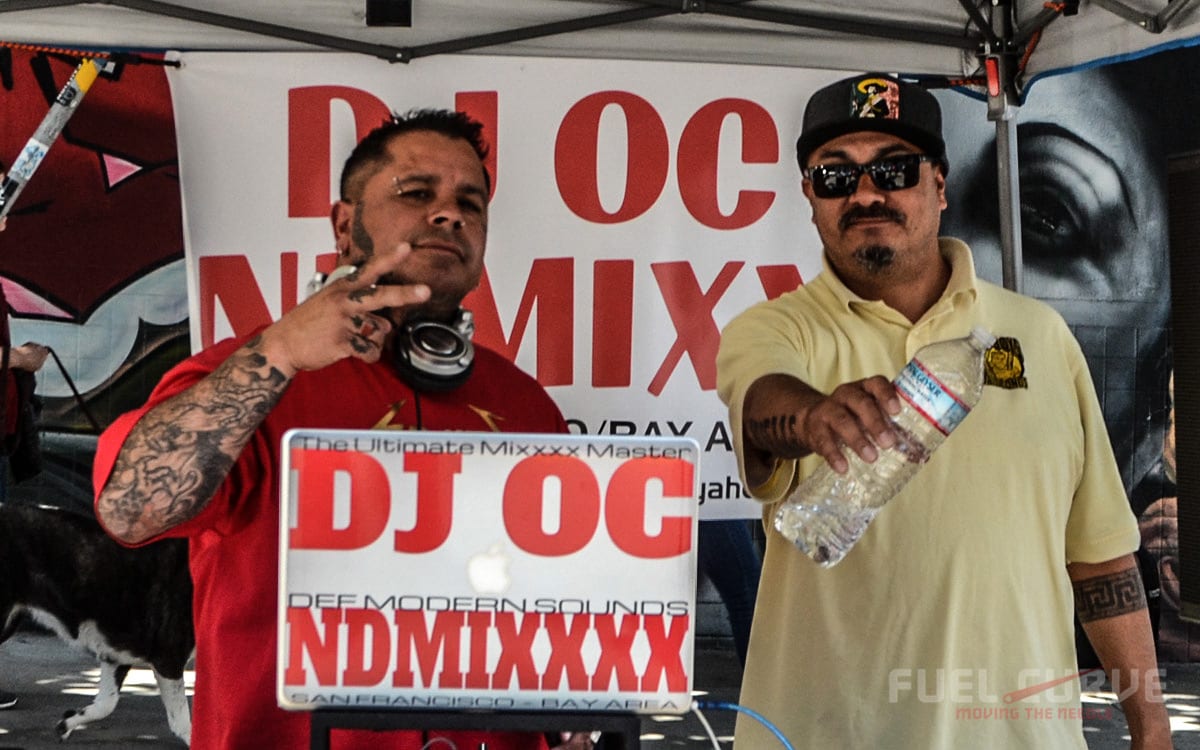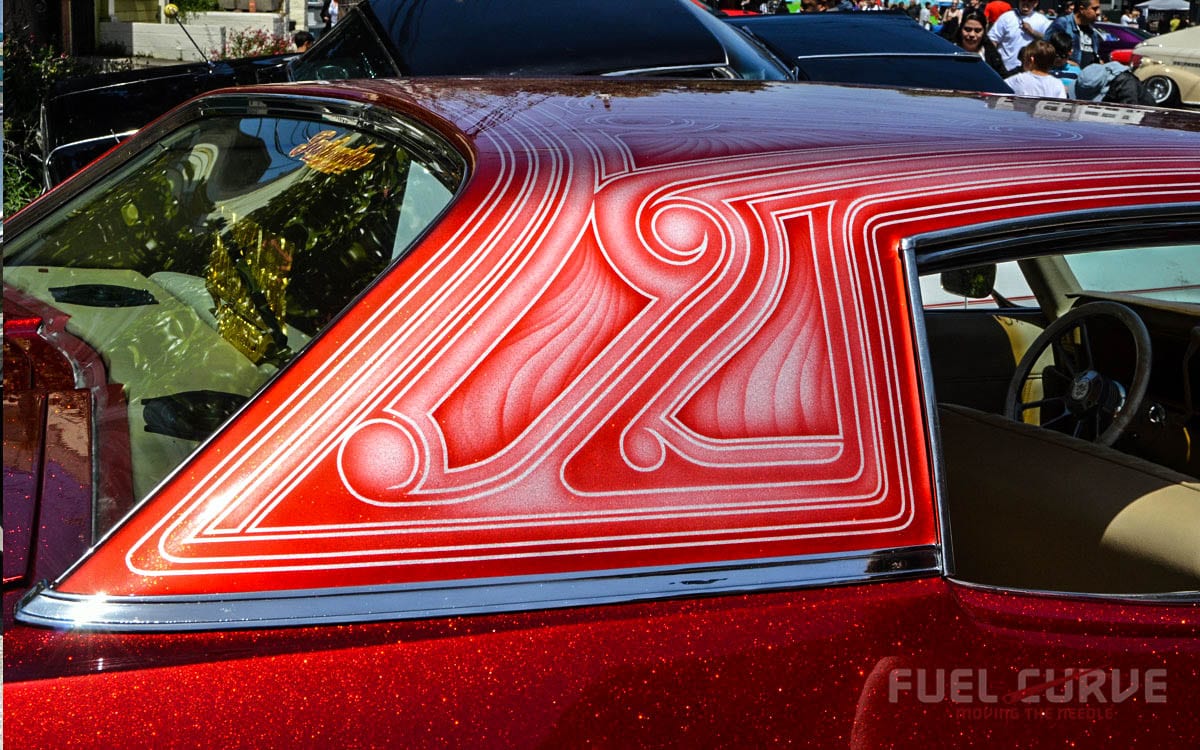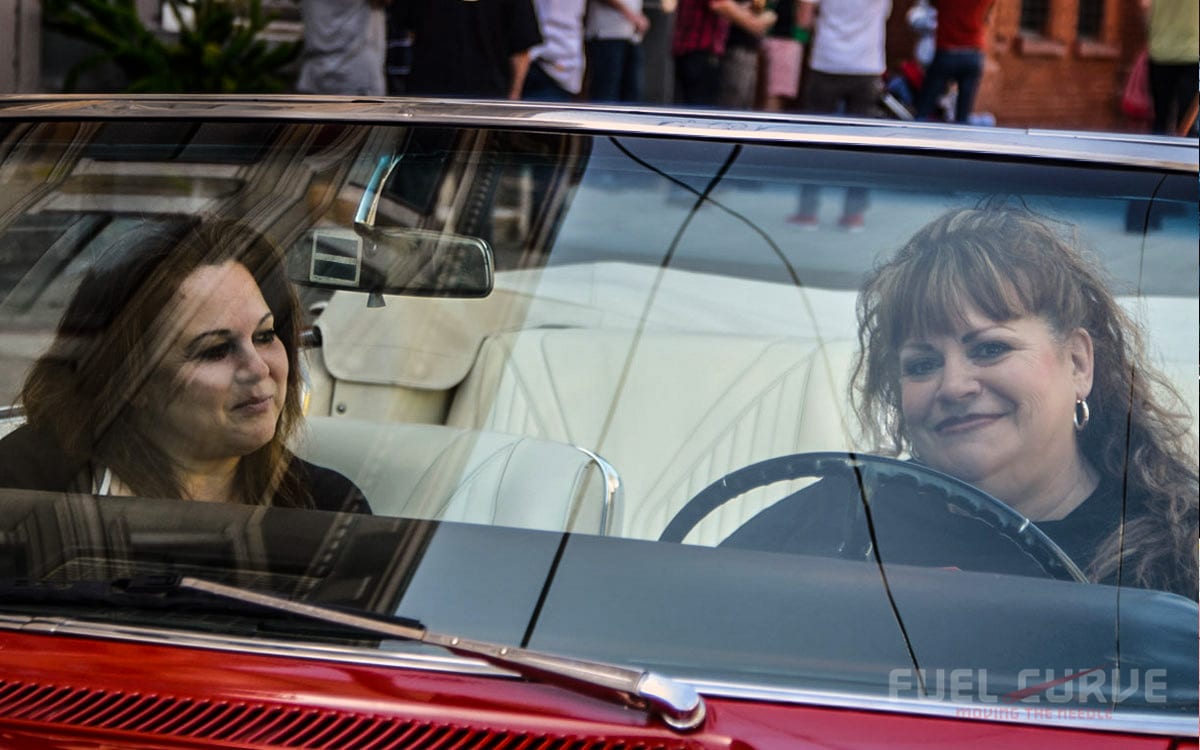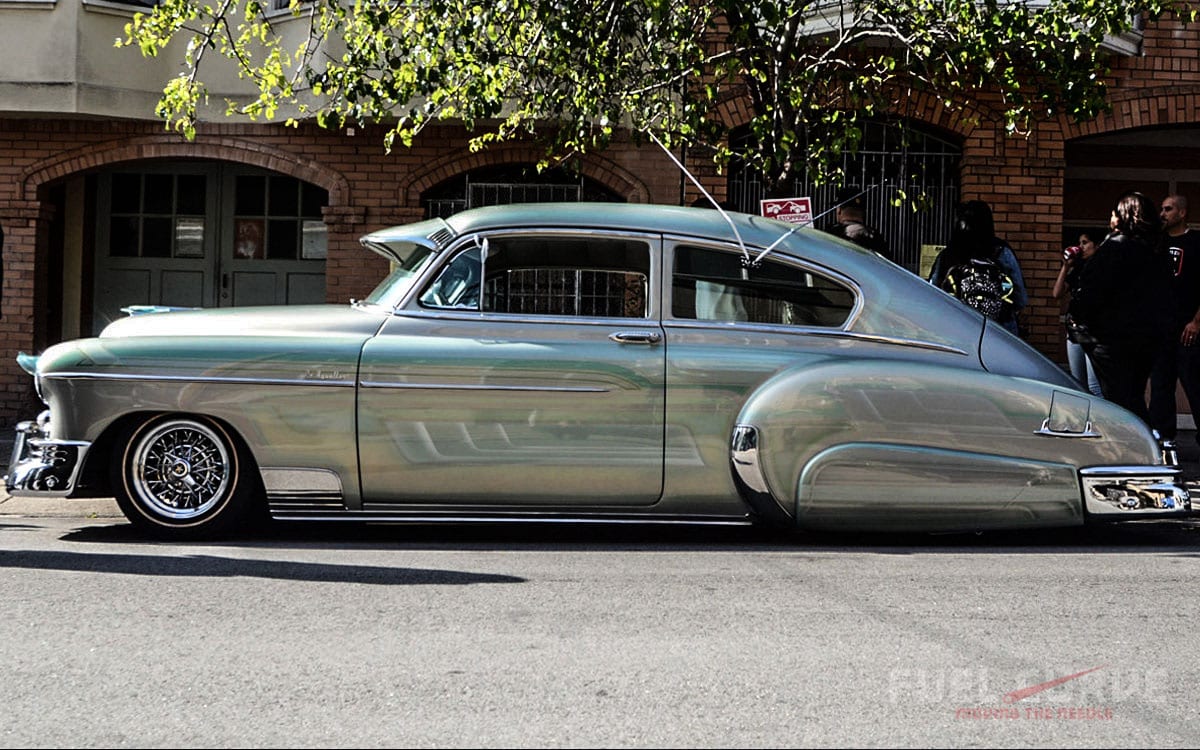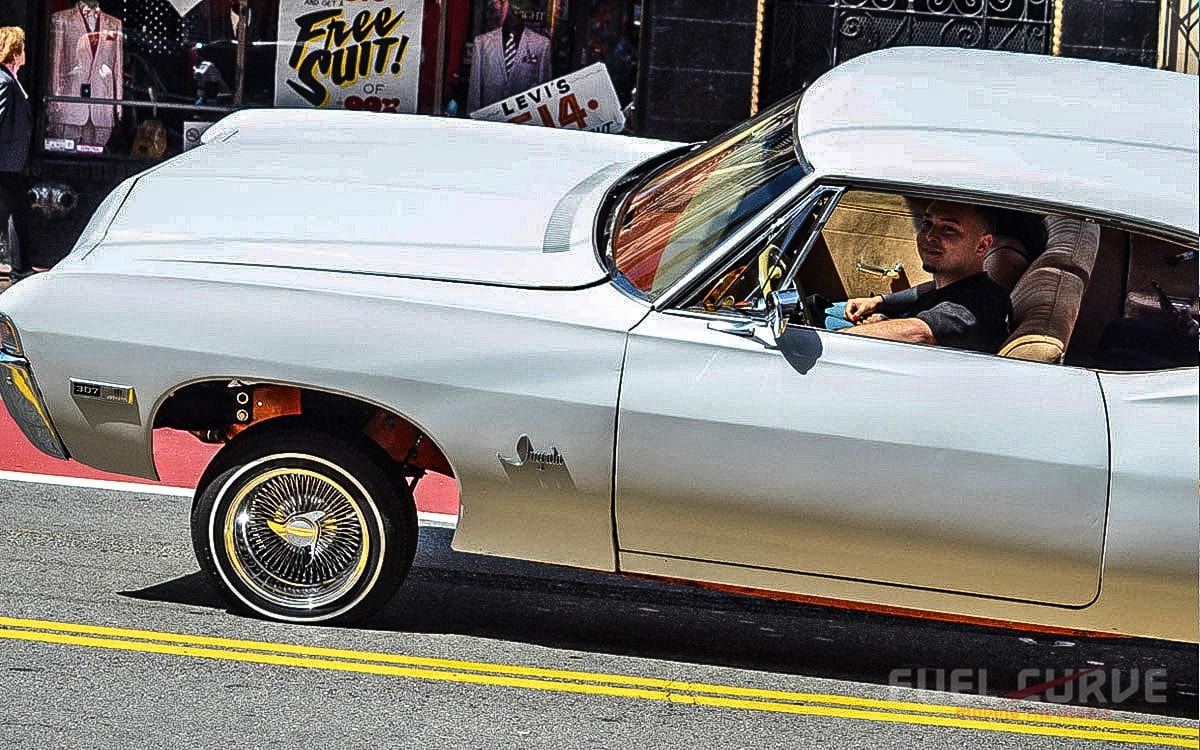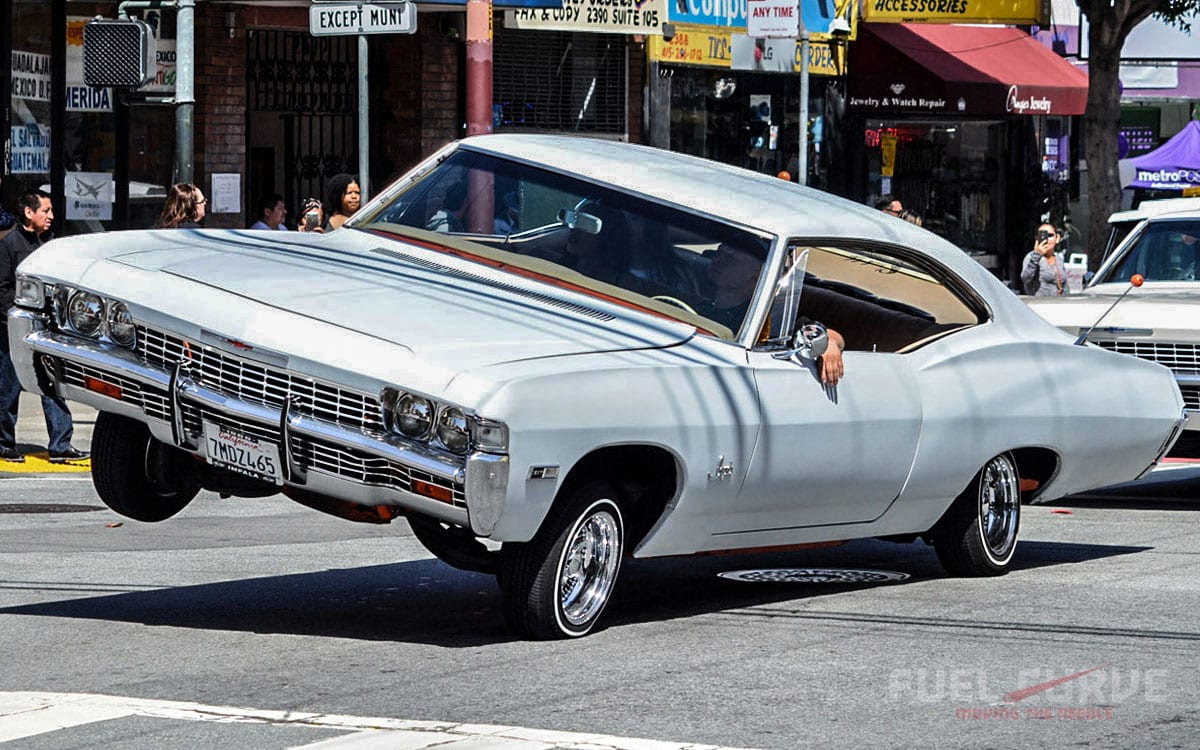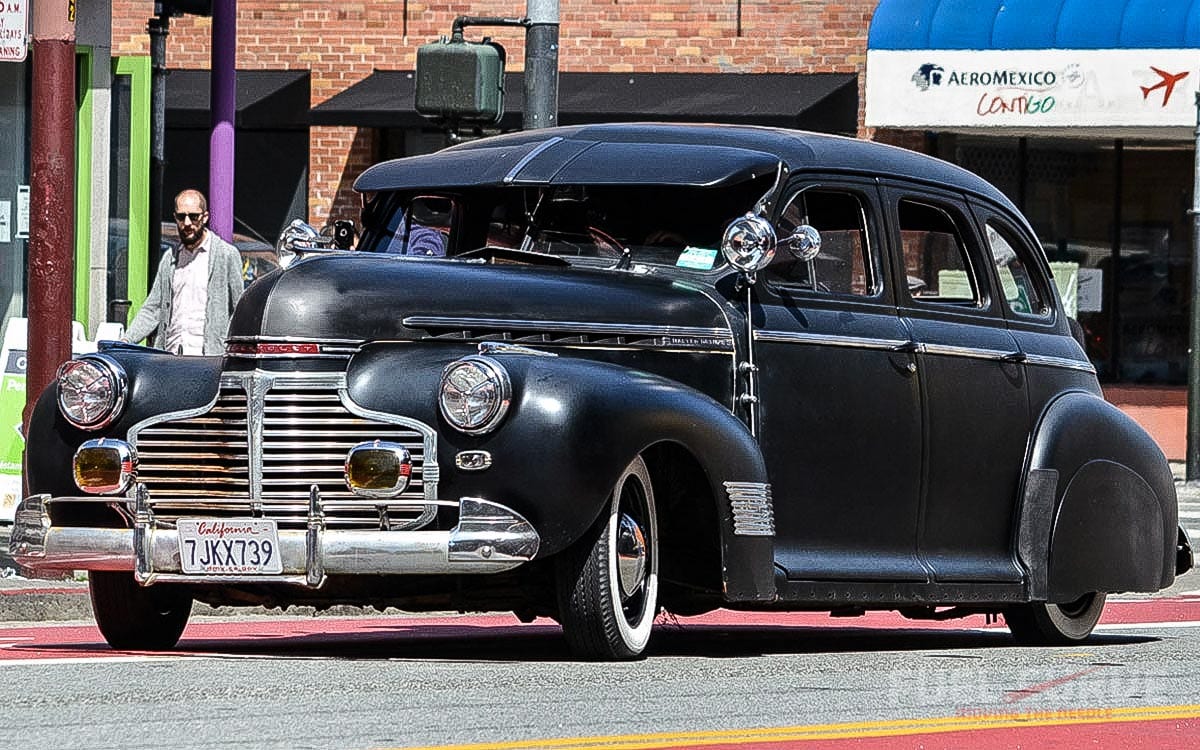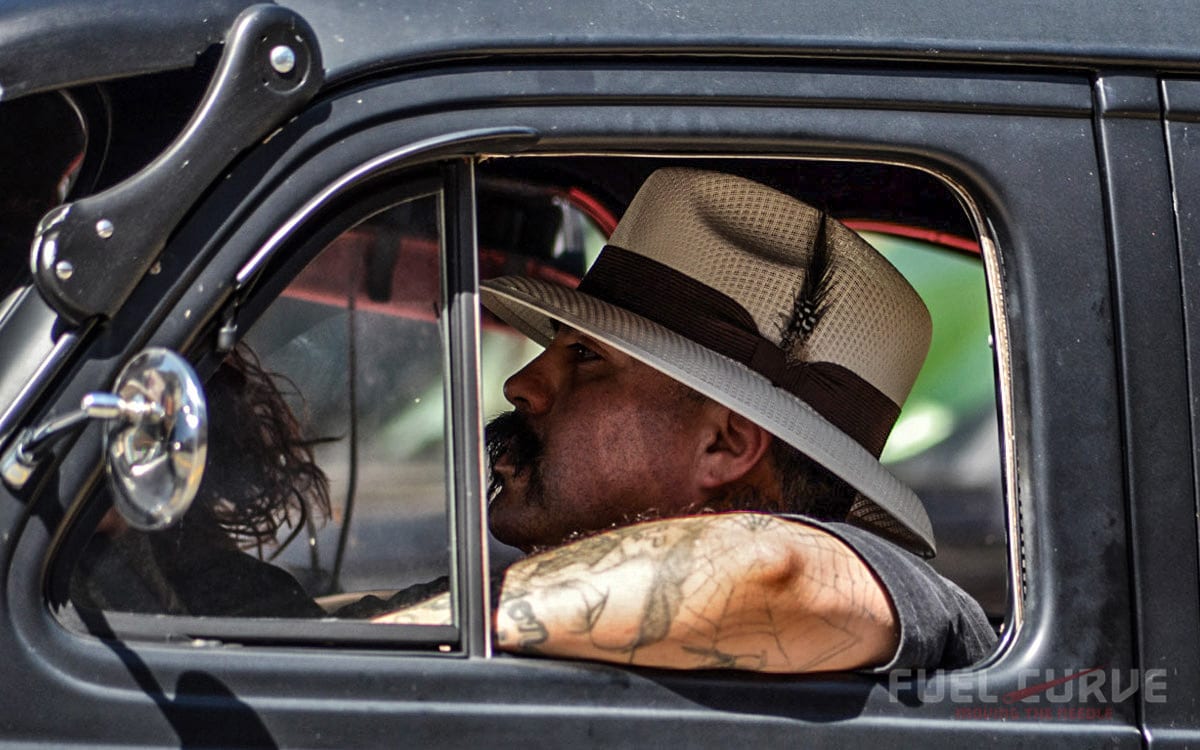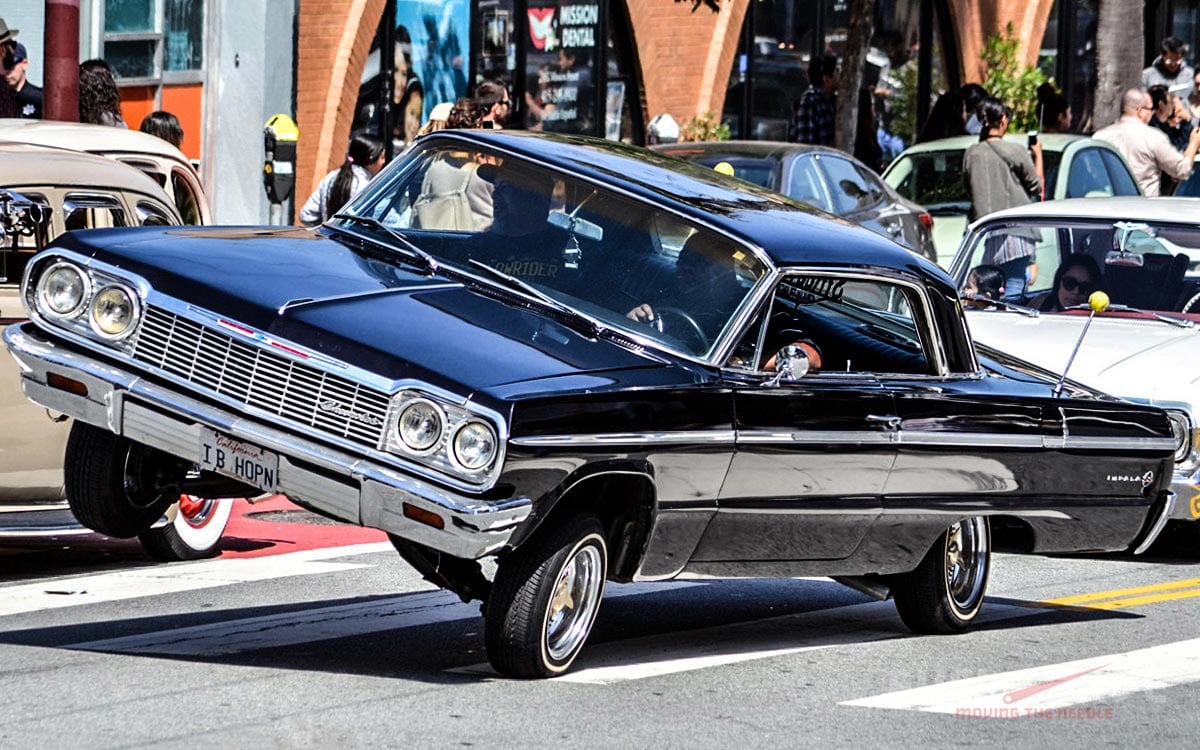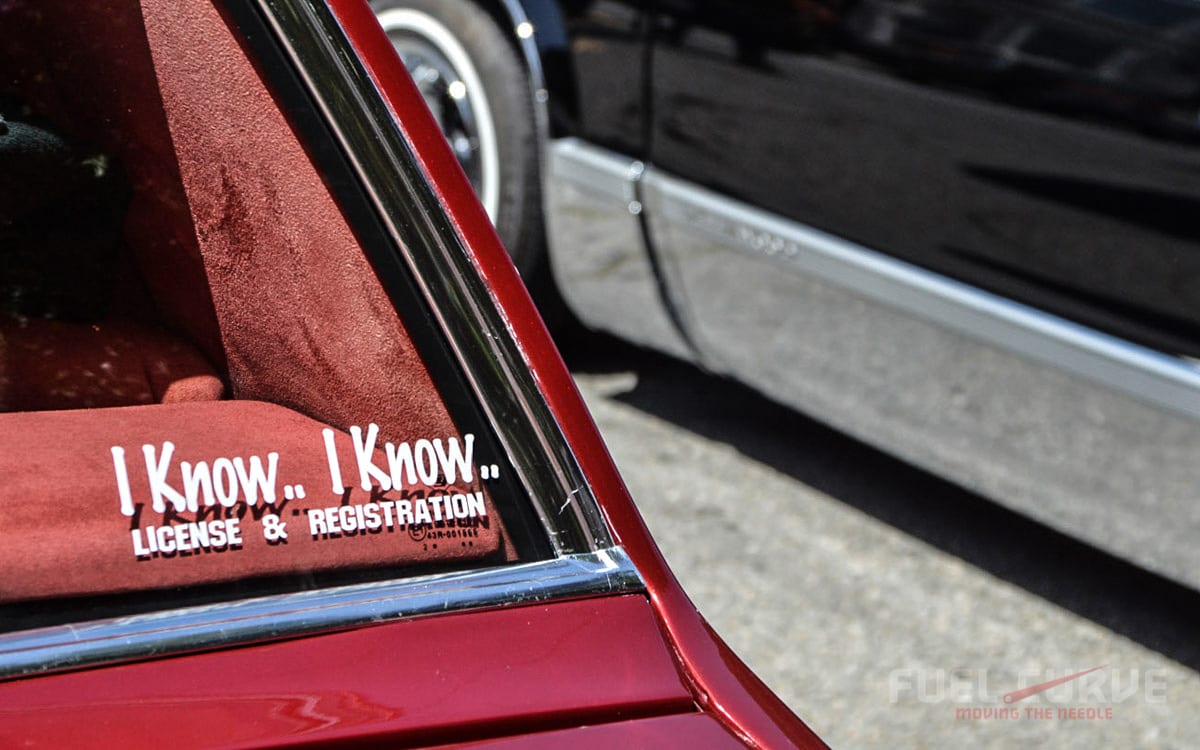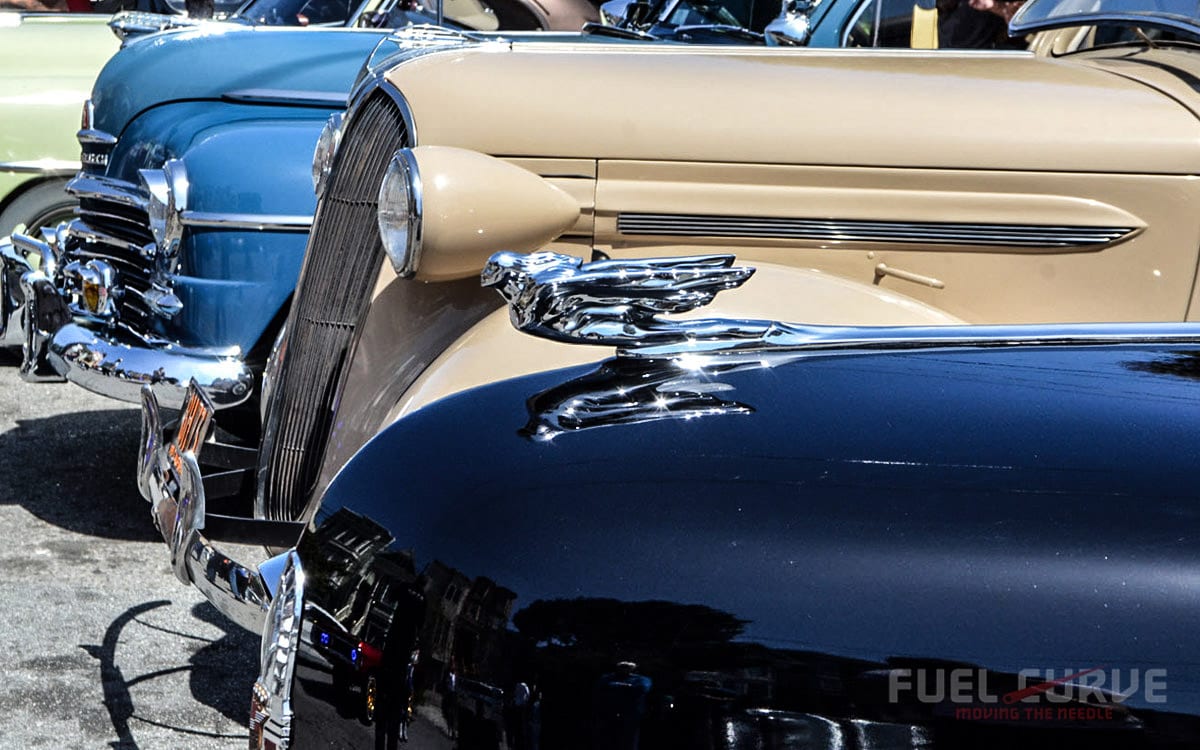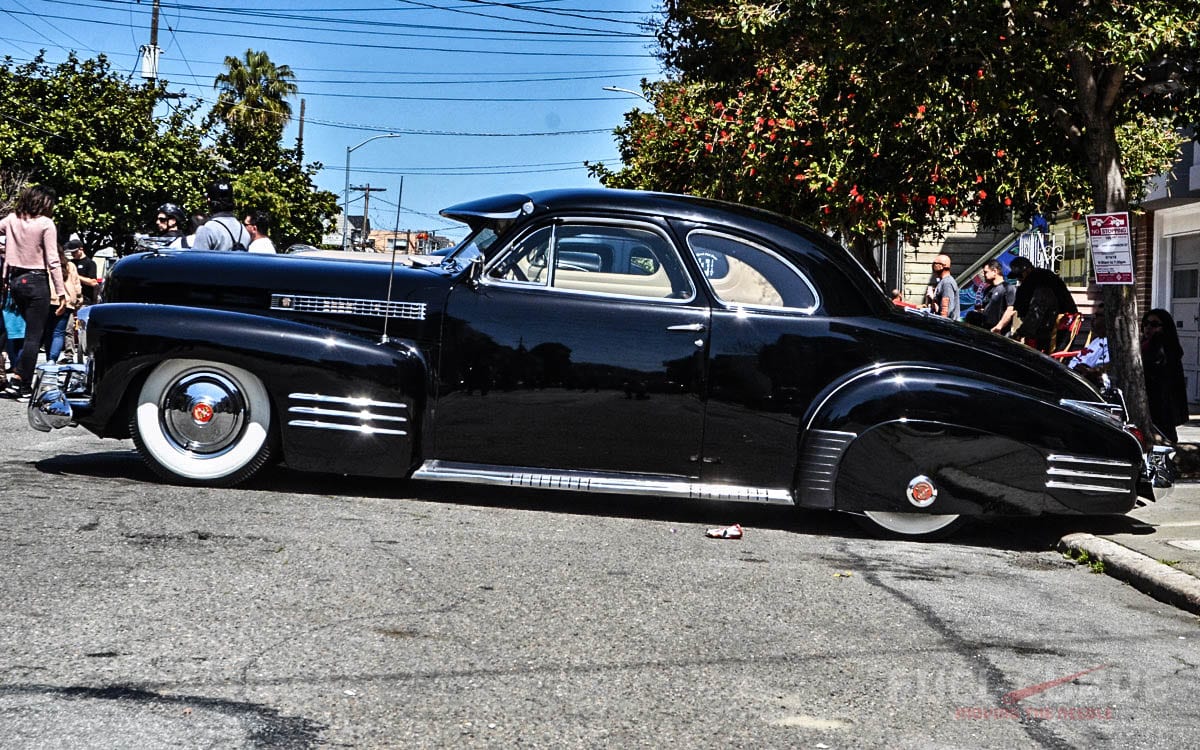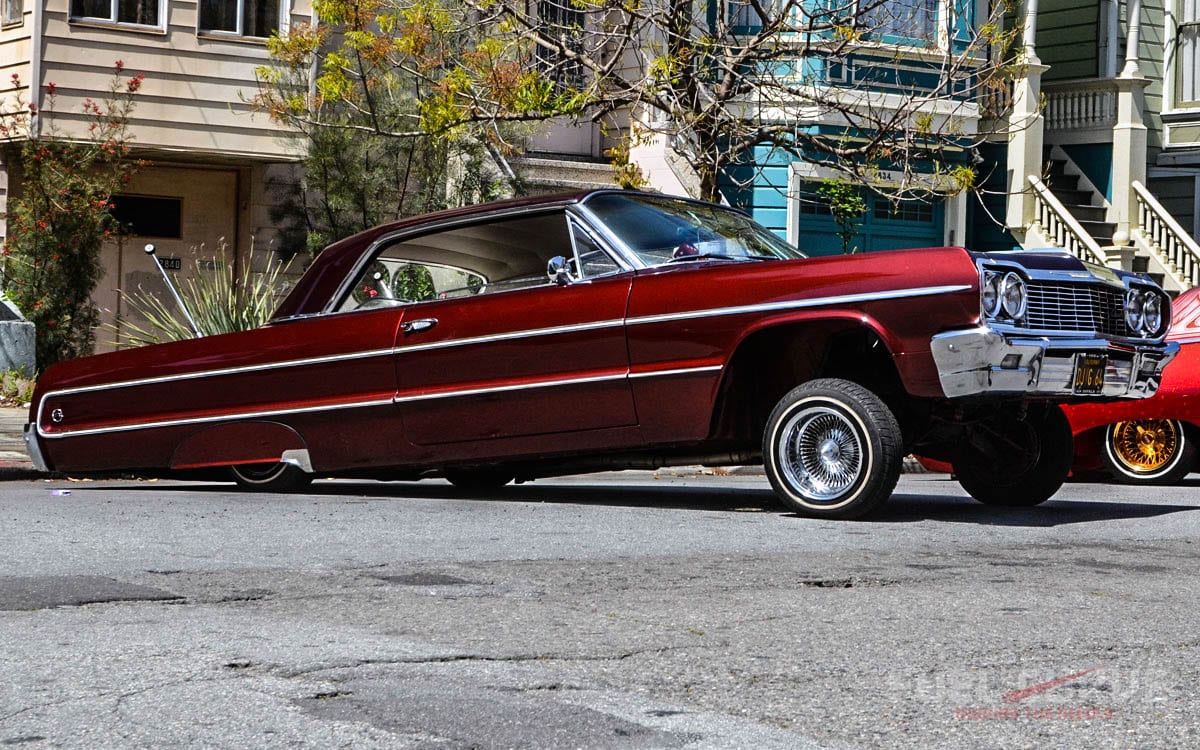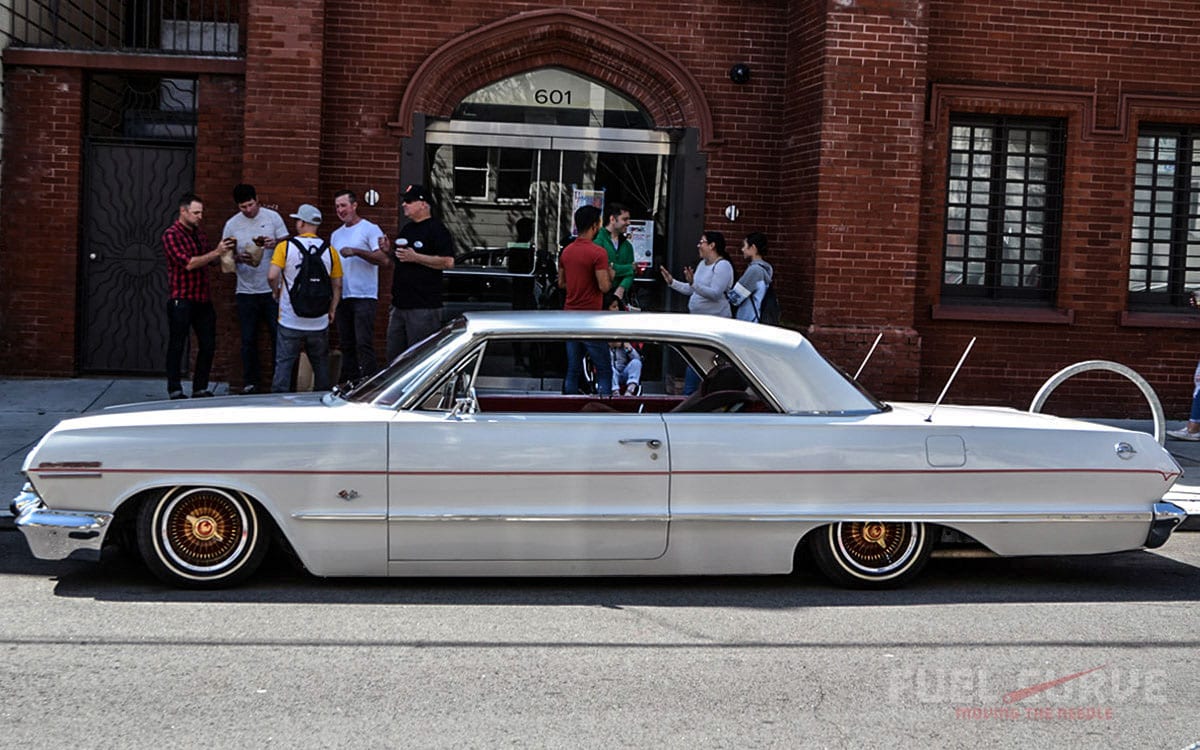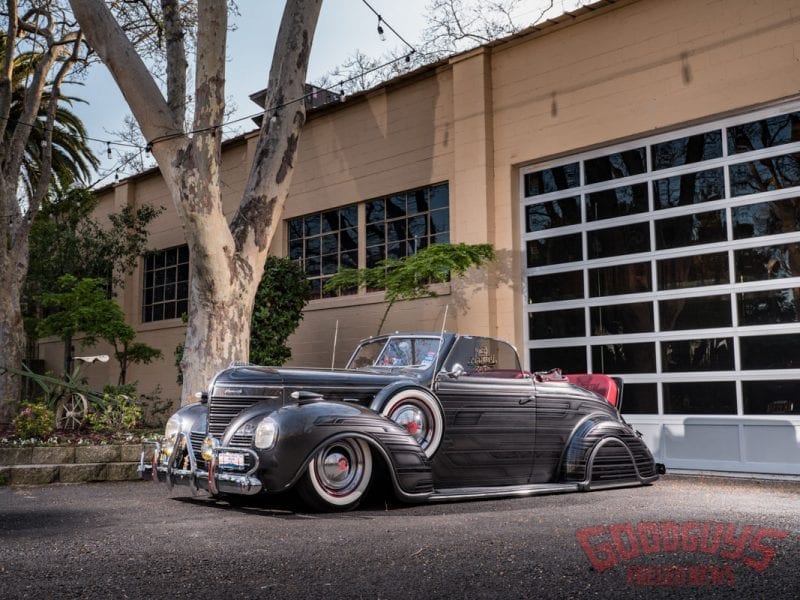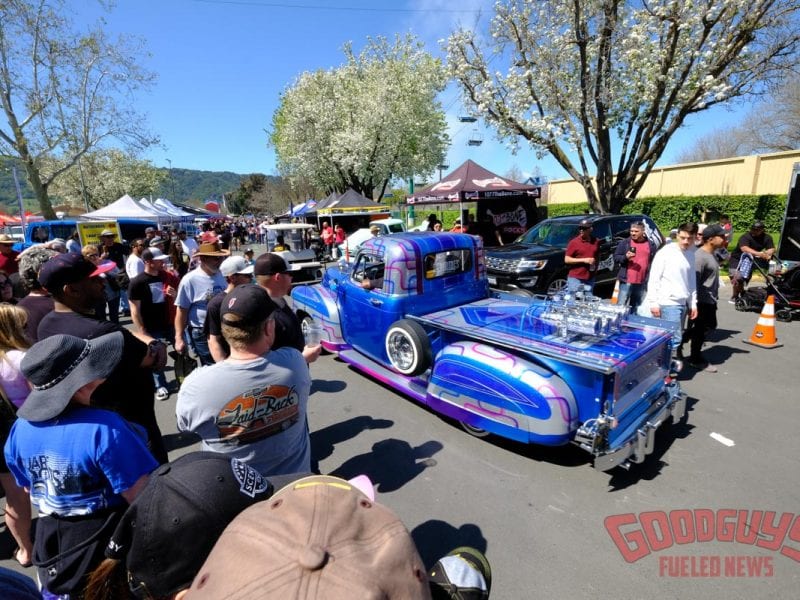Cesar Chavez Lowrider Parade – Motoring Through the Mission
San Francisco, a city known around the world for its seemingly steadfast state of motion, slowed its pace for a few hours on Saturday, April 14th for the annual Cesar Chavez Lowrider Parade and Festival—the largest in Northern California. Low and slow was the name of the game, and just like in years past, the streets of the city’s Mission district were filled with some of the Bay Area’s best lowriders thanks to the efforts of the San Francisco Lowrider Council.
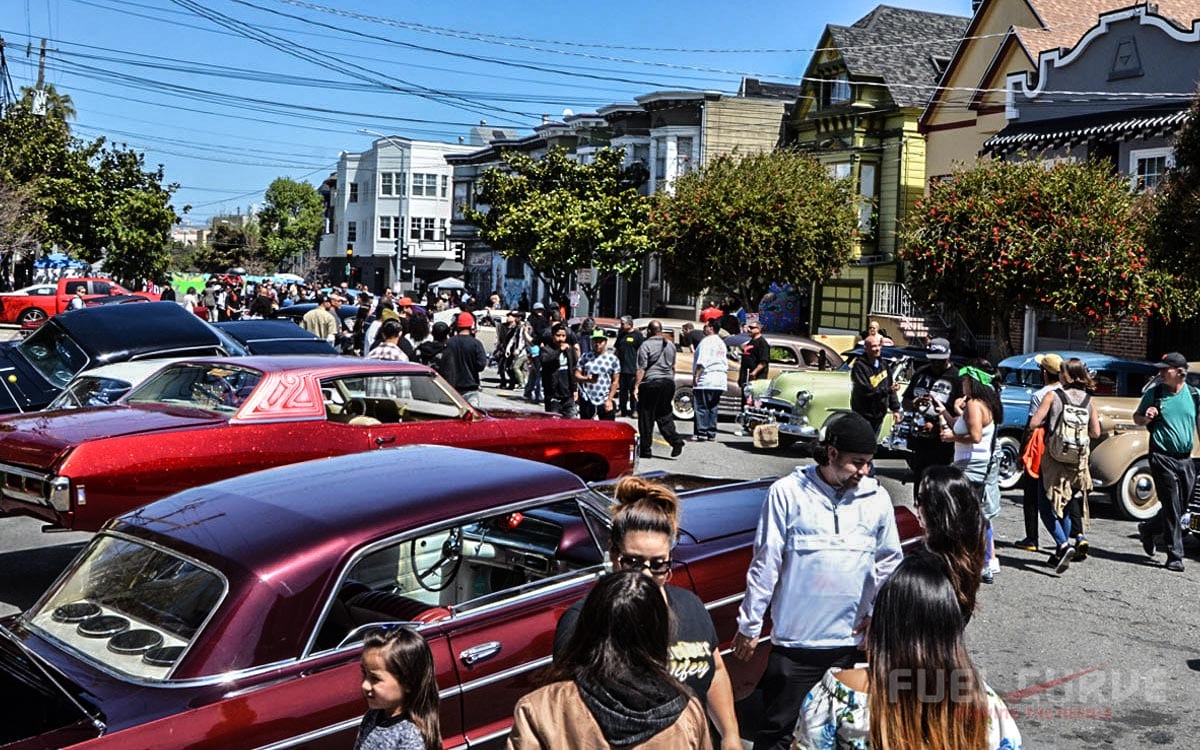
Turn back the clock 40 years and it would have been a very different scene, says Roberto Hernandez, president and founder of the Council. “I started lowriding when I was a kid,” he adds. “Back then, it was not a popular thing. San Francisco Police Department would shut down [Mission] Street so we couldn’t cruise.” Roberto, now 61 years old, is a Mission district native—an endangered species as he puts it. Although these days you can find him rolling around town in his ’47 Chrysler or one of his ’64 Impalas, he was cited 113 times for lowriding during his younger years. Frustrated by the harassment, he decided to take legal action and form the Council in 1981 to help clubs and solo riders alike. “We won,” he says. “We got the right to cruise.” Since then, the relationship with law enforcement has greatly improved.
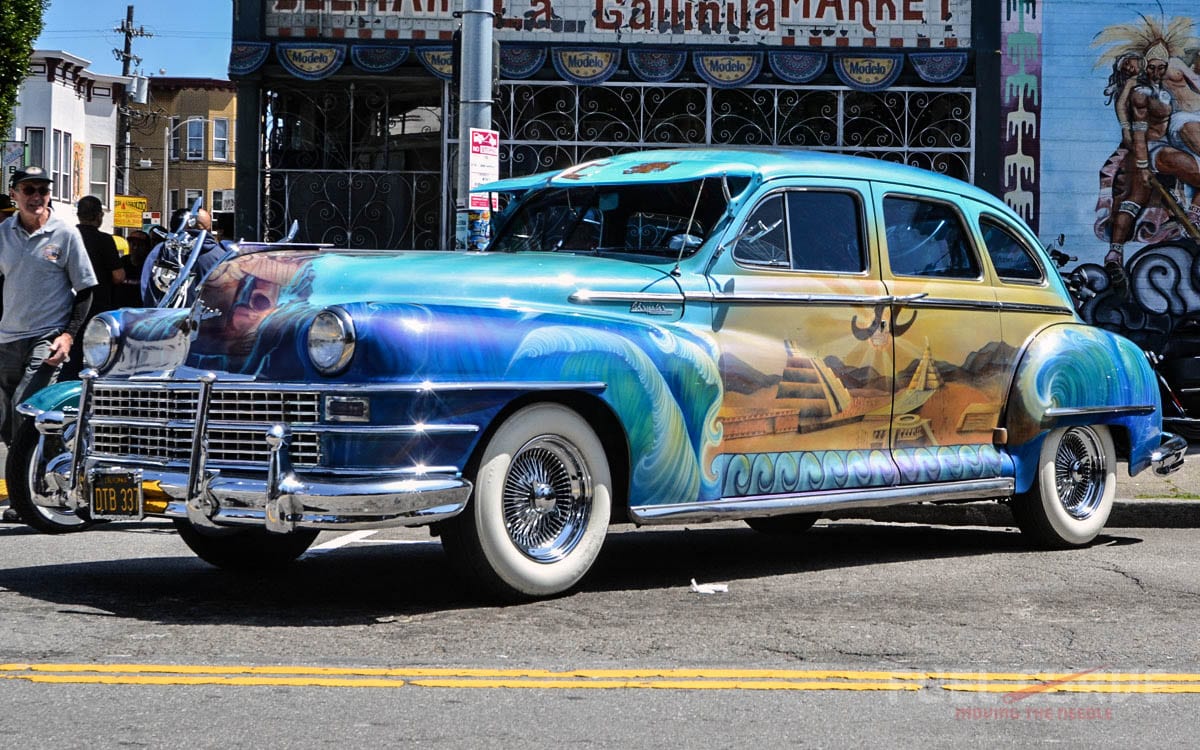
By nine o’clock Saturday morning, metal barricades were already in place on 19th Street to provide a staging area for lowriders and parade participants. At first, there were only a handful of Chevys parked along the curb—a panel painted Fleetline, a pre-war bomb and a lifted Monte Carlo. Down the street, a group of students from the California Cadet Corps practiced parade formation as their parents looked on. Then, as if someone had sounded some great signal, the cars started pouring in. Impalas, GTOs, Chevy IIs, late model Mopars, Cadillacs and more. Bass from the trunk of a late-’60s Pontiac shook the ground and bounced off the nearby mural-covered apartment buildings. Traditional Aztec dancers adjusted their feathered headdresses while kids scurried around on lowrider bicycles like loose pinballs in the street.


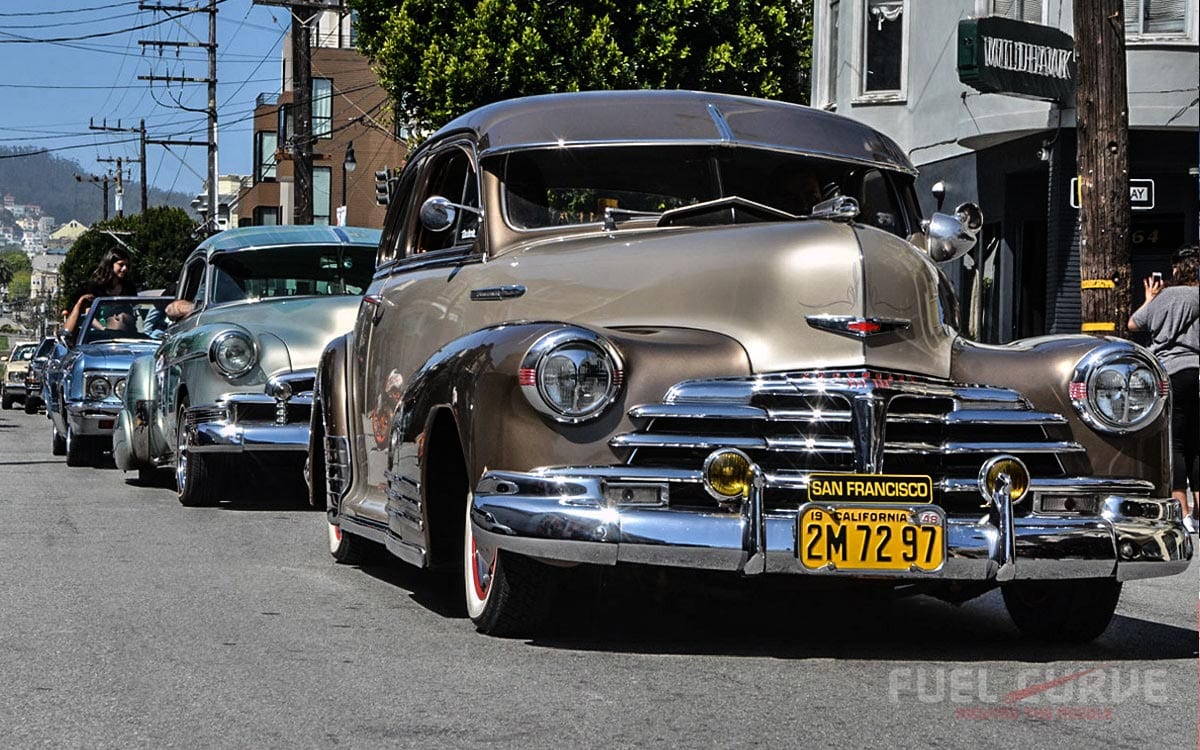

Amidst all this, a man in a red T-shirt stood calmly next to a similarly hued 1969 Chevy Impala parked beneath a tree. The car sat low (way low!) and sported 14-inch wires, a black vinyl top and a gold-plated plaque in the rear window that read “San Pancho.” He introduced himself simply as “G,” and he told me 2018 marked the ’69’s big return to the parade. It’s been seven years since he picked up the Chev in the Pacific Northwest—a trip that he says quickly turned from a five-hour drive to a 10-hour ordeal with his kids along for the ride. After safely bringing it home, he cruised in the Cesar Chavez parade that year and then proceeded to turn the hardtop into the candy red creation it is today—complete with hydraulics on all four corners. “It’s a different story now,” he said with a grin.
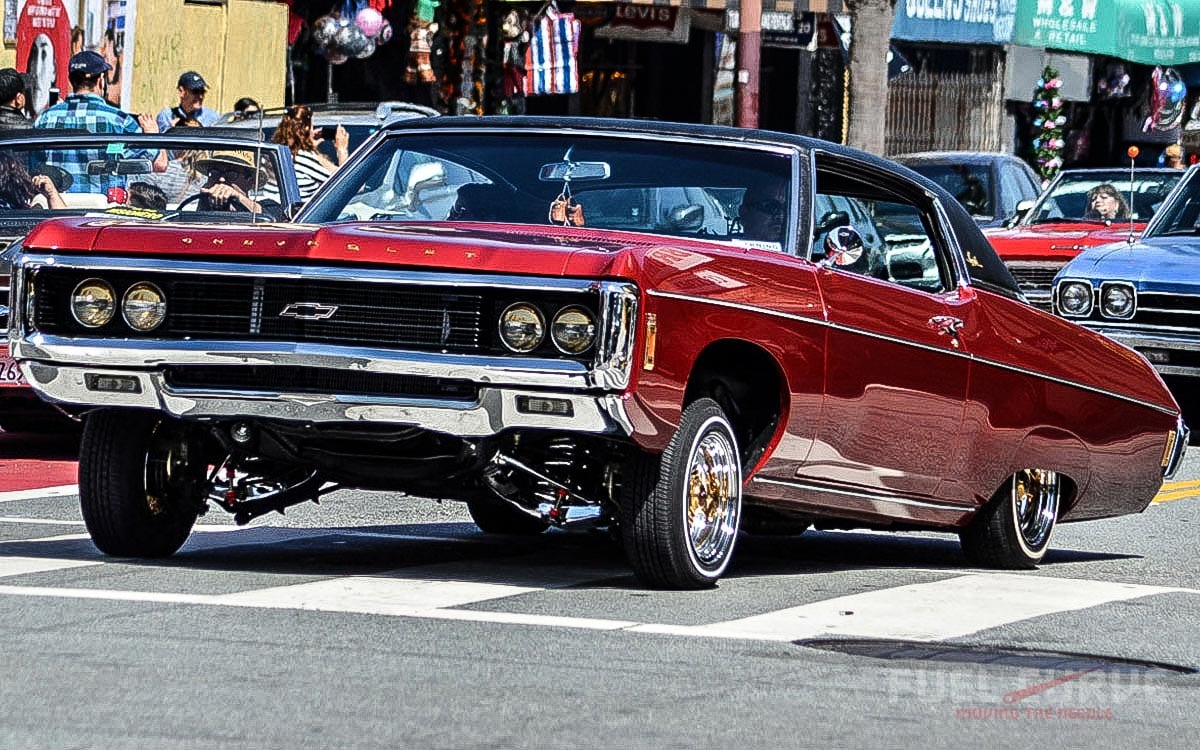



Soon after we spoke, the parade was underway. Two very important vehicles led the pack—an early-’60s Chevy pickup and a late-’40s Chevy sedan. Both were well used, well worn and looked as if they had been driven straight from the fields onto the streets. The truck’s stake bed was festooned with flags, posters and signs, including those from Chavez’ United Farm Workers marked with a black eagle silhouette. The late Cesar Chavez is revered as one of the most influential activists for farm workers’ rights of the 20th century, and this annual parade is held in celebration of his birthday, March 31st. This year marked 25 years since his passing.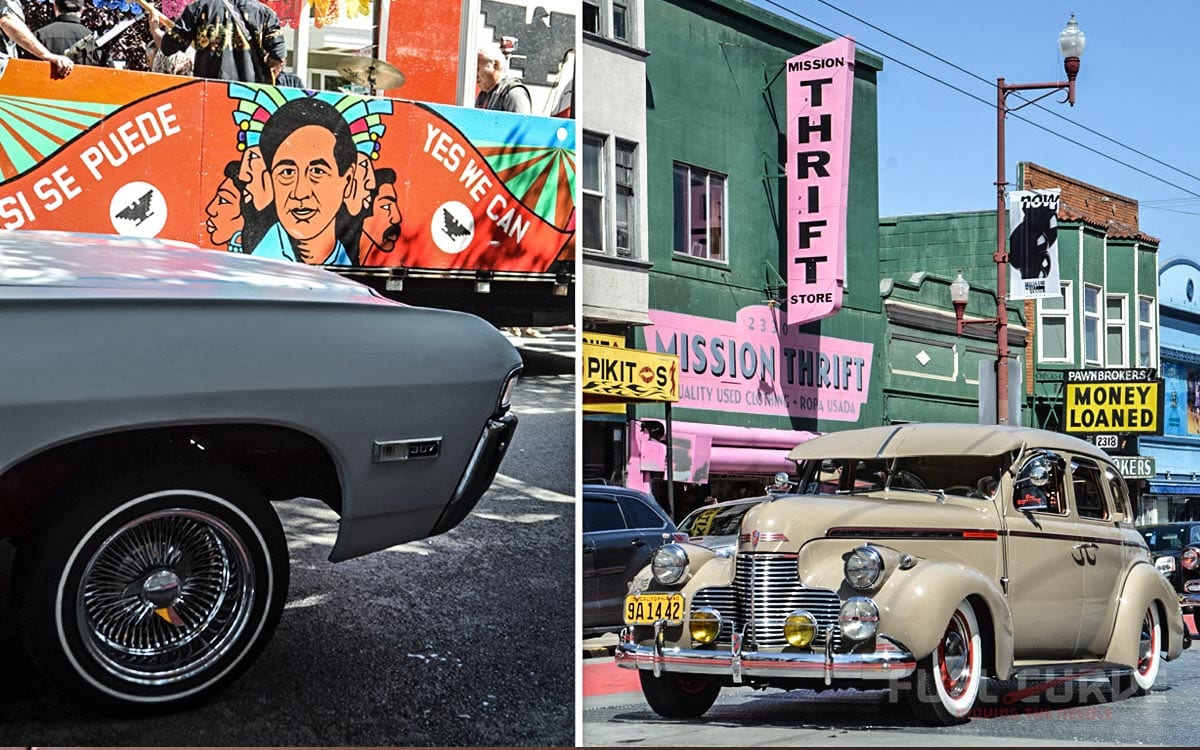

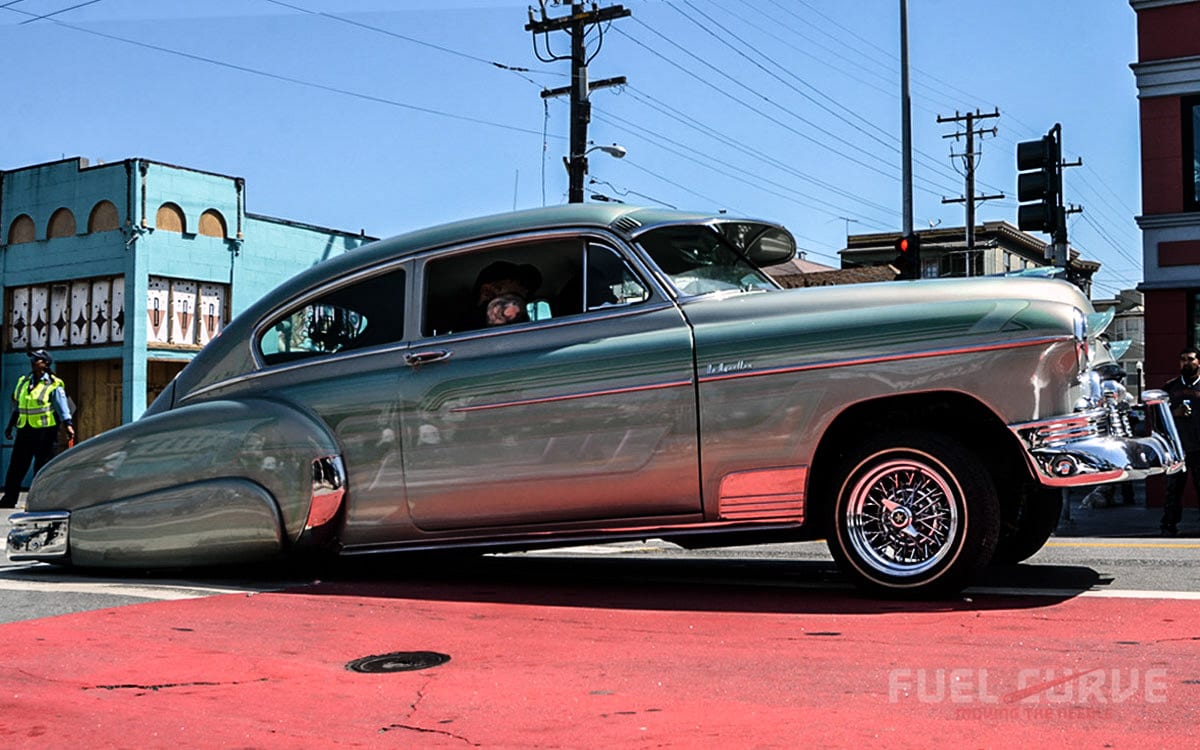

The mass of people and vehicles moved down 19th Street single file. Union groups on brightly colored floats threw red plastic beads to the onlookers who had gathered along the sidewalk. A band played on a float with a portrait of Chavez and the words “Si Se Puede…Yes We Can” painted on its flanks. Sirens wailed. Stovebolt sixes rapped through straight pipes. WWRRAGH WRAAAAAAGH. More cackling from chrome pencil tips. More sirens. More smiles. Once the lowriders hit Mission Street, the hydraulics were on full display. Up in front, down in rear, sometimes vice versa and sometimes teetering on three wheels.
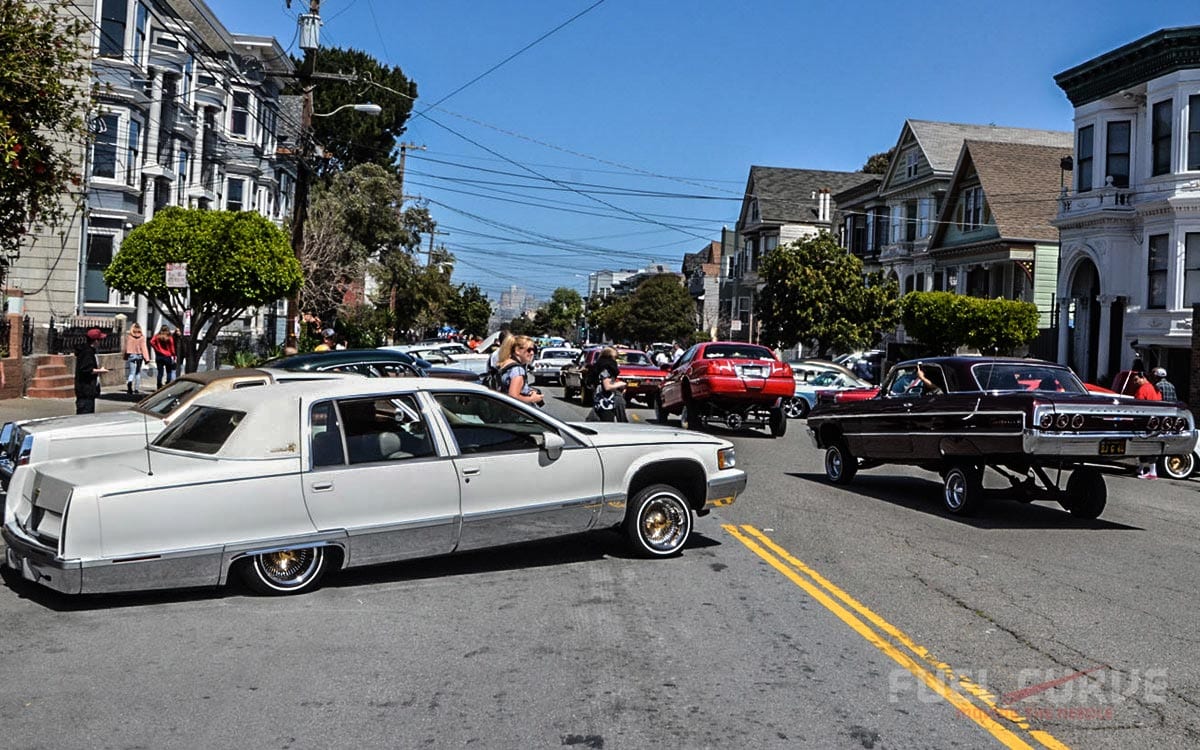

Shoppers on the sun-soaked sidewalks were shocked. Out came the cellphones—and the commentary. “Sixty-four, sixty-four,” a woman yelled at the man behind the wheel of his Impala. “Hooooooly sh*ttt,” another exclaimed as she watched an oversized Chevy defy the laws of physics at a stoplight. “Did they do it like that in the ’70s?!” a college-aged kid asked an older gentleman on the street corner. There were shouts, shrieks, Snapchats, (Instagram) stories and, of course, selfies.
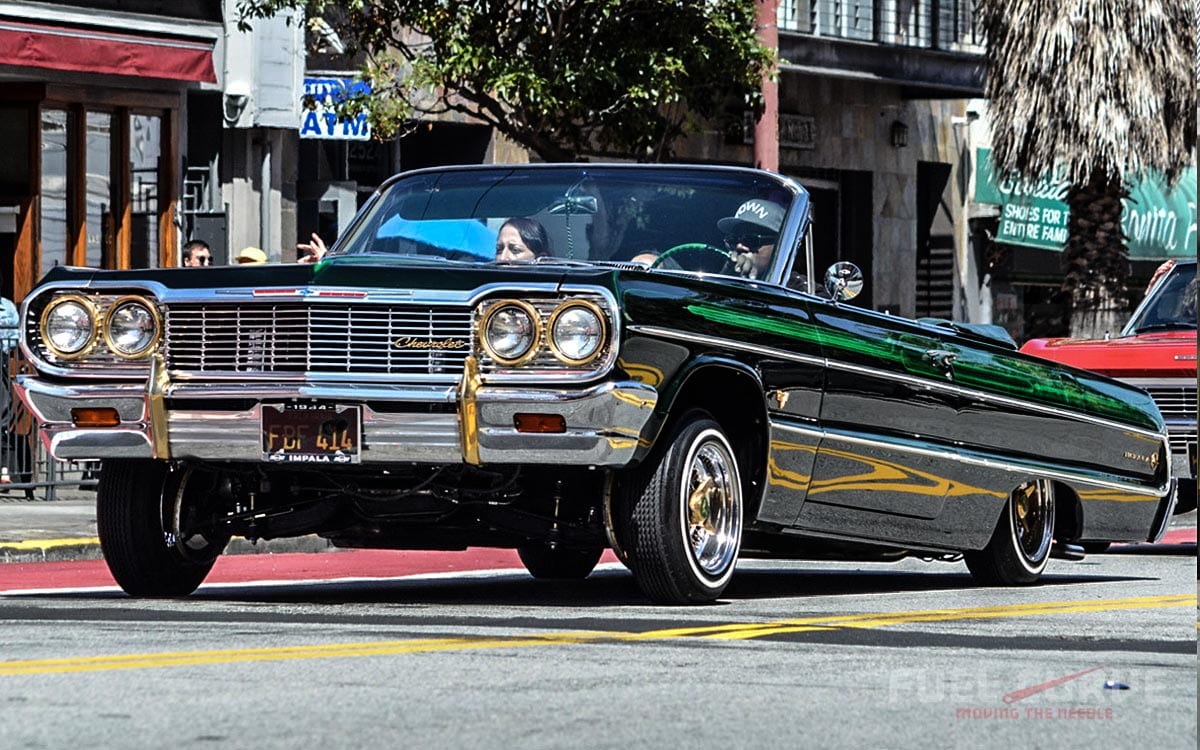

Through the pandemonium, the lowriders kept cruising. Past the markets, the theaters, the storefronts, the murals, the locals, the tourists, those who knew exactly what was happening and those who had absolutely no clue. Police blocked the streets to ensure their route was trouble-free. And so they rolled, low and slow, with Metalflake paint glimmering, V8s rumbling and hi-fi stereos providing the soundtrack on that bright San Francisco morning.
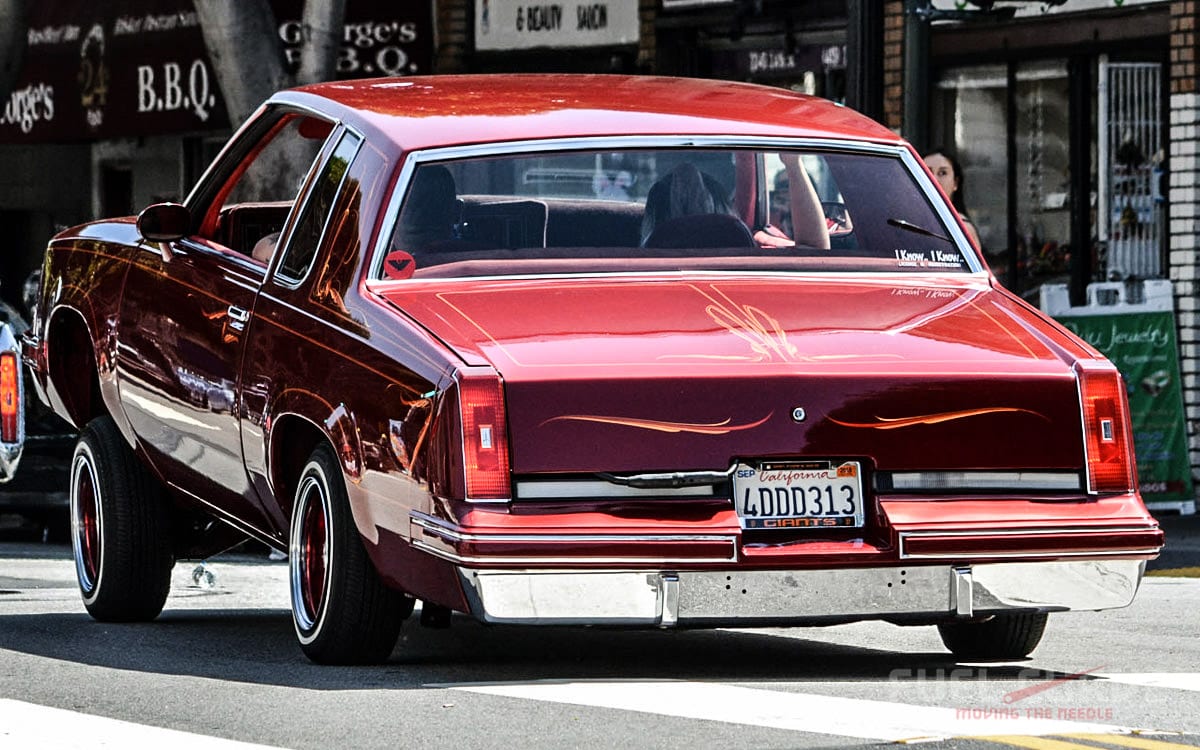

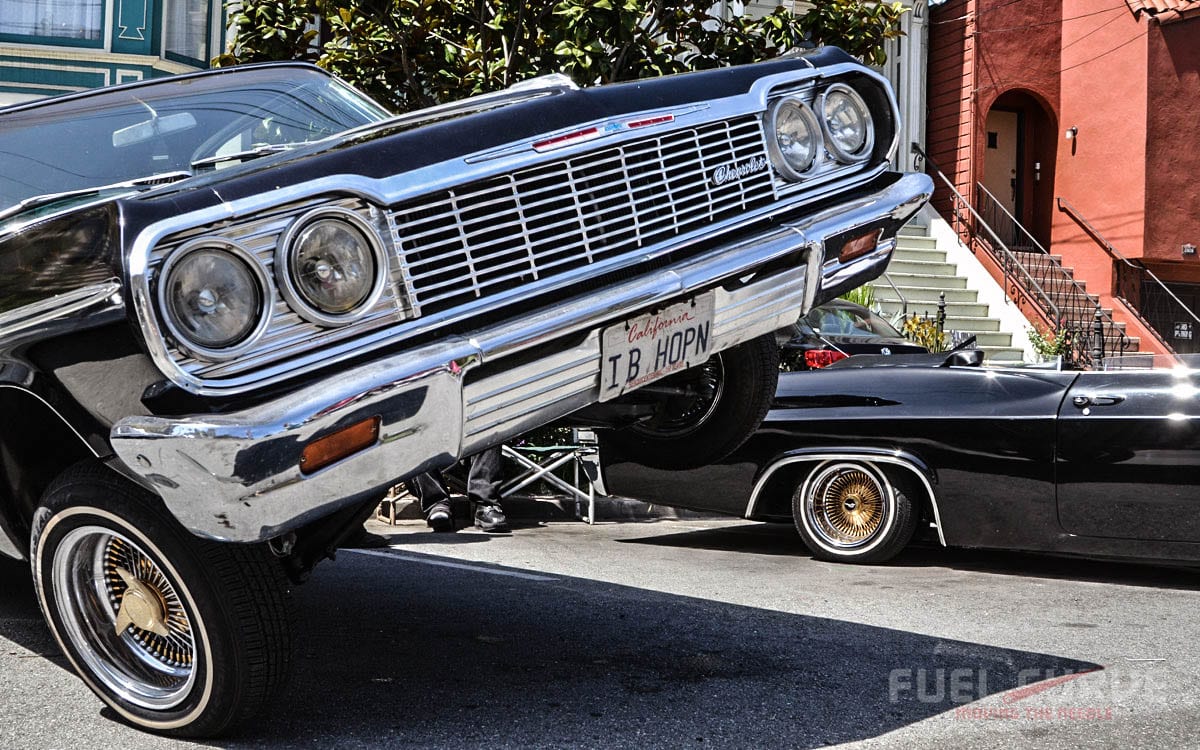

The parade wound down with a car show on Harrison Street. Up went the DJ booth, in came the lowriders—more than 50 of them—and with them came the crowds. Before I knew it, lowriders of every era parked side by side as far as the eye could see. An Impala posed on three wheels with the license plate “I B HOPN.” A slammed ’41 Cadillac that the owner said “Rode like a buggy” before he got it sitting ground-scraping low. Vibrant. Colorful. Young. Old. Thriving. “Lowriding is passed on from generation to generation,” Roberto says. “They’re the kings of the street.”


